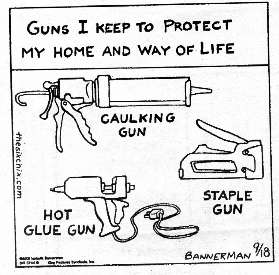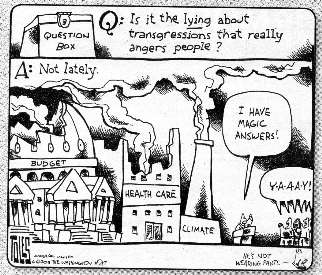Great Basin National Park - Day Hikes
Wheeler Peak waltz, Bristlecone bounce, Baker Lake grunt, Lehman Creek lounge
with Kathleen Jones
camera: Panasonic DMC-FZ200

|
| |||||
|
| |||||
| ||||
| ||||

|
| |||||
|
| |||||
| ||||
| ||||
Photos are scattered throughout this report.
Summary: This report is about a series of four day hikes in Great Basin National Park:
Wheeler Peak waltz, Bristlecone bounce, Baker Lake grunt, and Lehman Creek lounge.
ERM - Energy Required Miles. A mile is added for every 500' elevation gain or loss.
It's a very serviceable method of estimating energy required miles.
Prelim: dramatic coolness. We've made it to the dramatic coolness of
camp below Wheeler Peak in Great Basin NP (National Park), grateful to have escaped
the repulsican-fueled global climate change heat wave. We leisurely stroll the nature
loop near camp. Shooting Stars grace the riparian zone and also the Carl Sagan dark
sky - uncontaminated with vagrant light, billions and billions.....
Day 1: Wheeling to Wheeler Peak (13,063'). Wheeler Peak waltz; 9 miles; +/- 3,000' = ERM of 21.
Keep scrolling.
A kaleidoscope of purple Sky Pilots and magenta of Parry Primrose,
with yellow of Alpine Buttercup and white of Phlox grace the rubble pile of fractured quartzite called
Wheeler Peak. Uplifting. Nature's canvas. It's a good steady climb far above tree line. Today, a
few cumulonimbus clouds form, appearing like wraiths growing, bulging bulimic directly overhead. No
rain, no lightning, yet perhaps a bit of static electricity levitates the arm hair. Also, could it
be anticipation for electrical enlightenment or rapture? Naw.
It's glorious and warm on the summit. We meet Nicky S. of New Zealand,
and enjoy a short chat - latter reconnecting with her in the CG (campground).
It's an excellent day of touring alpine tundra.

| ||||
| ||||
 |
 |
 |
 |
 |
 |
 |
 |
 |
 |
 |
 |
 |
 |
 |
 |
 |
 |
 |
 |
 |
 |
 |
 |
Day 2: Bristlecone bounce. Bristlecone grove, rock glacier,
alpine lakes loop. 6.2 miles; +/- 1300' = ERM of 11.4.
The skunk smell of Sky Pilot wafts past as we
enjoy views of Wheeler Peak, primrose, and Shooting Stars along the Teresa Lake
outlet. It's a fun bounce up the rock glacier in the cirque. The surface of Stella
Lake reflects on the mountain and we reflect on the openness of democracy as exhibited
in protected public lands everywhere.

| ||||
 |
 |
 |
 |
 |
 |
 |
 |
 |
 |
 |
 |
 |
 |
 |
Day 3: Baker Lake Grunt. Out and back, Baker Lake. 13 miles; +/- 2600' = ERM of 23.
The flower diversity is magnificent. From cactus to mariposa to
Monk's Hood to Parry Primrose to wild rose to Paintbrush to Columbine to penstemon, etc. A
kaleidoscope of colors and hues. Starting at 8,000' in a mixed forest, we progress up and up,
into conifers. Along the creek, into the open, through the woods the trail wanders.
Finally, to Baker Lake, diminutive and in a cirque. Winding
down from the cirque, we plow into a cackle of wild turkeys. They blast into the trees and we
get a distant peak at a jake peeking out from tree branches.
A pattering of rain overruns us as we are almost to the TH.

| ||||
 |
 |
 |
 |
 |
 |
 |
 |
 |
 |
 |
 |
 |
 |
 |
Day 4: Lehman Creek lounge. Lehman Creek Trail between the CGs (Wheeler
CG to Upper Lehman CG and back). 7 miles; +/- 2100' = ERM of 15.
More terrific diversity envelops us as we hike down to
Upper Lehman CG from Wheeler CG, winding along Lehman Creek, then out in a sagebrush flat
with Wheeler Peak as backdrop, across Osceola Ditch and into Mountain Mahogany, juniper,
and to Lehman CG. A host of flowers line the riparian area and dot parts of the forest.
At the lower CG - we find a good place for lunch, stream-side. Louise, Judy, and Jan join us to talk.
Back at camp, we enjoy the Wheeler view, and chat with
Jan G. and sweet dog Cooper about life in Nevada, at the foot of the Sierra. All this while
enjoying hummus and veggies and gazing at the escarpment of Wheeler Peak. Life is good.
 |
 |
 |
 |
 |
 |
 |
 |
 |
 |
 |
 |
*ERM: Energy Required Miles, are there data to support this
mileage adjustment?
Journal of Outdoor Recreation, Education and Leadership
Petzoldt first proposed his theory in his 1976 book “Teton Trails” to
help backpackers plan trips and calculate their energy needs on mountain trails. “Petzoldt defined one
energy mile as the energy required to walk one mile on the flat. He recommended adding two energy miles
for every 1,000 feet of elevation gain, so a person hiking one mile and 1,000 feet upward would use the
equivalent of three energy miles,” Phipps said.
Petzoldt’s energy mile theory was just a reflection of the mountaineer’s
“gut feeling,” Phipps said. The theory had never been tested in a laboratory before the study began in WCU’s
Exercise Physiology Laboratory in the spring of 2010, Phipps said.
To determine the validity of the theory, the study measured the energy cost
and perceived exertion for walking on flat ground, with and without a 44.5-pound backpack, and up an elevation
gain of 1,000 feet, with and without the backpack, through the collection of metabolic data, Phipps said.
Twenty-four student, faculty and staff volunteers, including 12 males and 12
females, went through four testing sessions as the research continued into fall semester of 2010. The study
results showed that the additional energy cost for ascending 1,000 feet ranged from 1.34 to 2.02 energy mile
equivalents, for an average of about 1.6 miles, compared to Petzoldt’s use of two energy miles for each 1,000
feet. The range revealed by the study was due to the “hikers” personal weight differences, Phipps said.
“It is remarkable that Petzoldt’s energy mile theory is so close to the actual energy cost measured during our
study,” Phipps said. “In the field of outdoor education, it’s important for leaders to include an estimation
of energy requirements during the planning of hiking trips.”
Phipps said the energy required for hiking up steep mountain trails would vary
for individuals and groups, and the variables of the trail would also factor in, but he recommends that
backpackers stick with Petzoldt’s idea of adding two energy miles for every 1,000 feet of elevation gain when
planning trips.
The Validity of Petzoldt's Energy Mile Theory, 2010
Authors: Maridy McNeff Troy, Maurice L. Phipps
Publication: Journal of Outdoor Recreation, Education, and Leadership
 |
 |
 |
See the maps imbedded in the above narrative. There are maps for three
of the four hikes. The tracks on the maps are from my GPS (Global Positioning System; actual GPS tracks).
The maps were constructed using gpsvisualizer.com, an excellent free-use
web software.
Scenic Toilets of Inner Earth.
Wealth inequality in America, thanks to tea-terrorists for making this more and more unequal
More Truth Than Joke:
| ||||
| ||||
| ||||
| ||||
| ||||
| ||||
 |
 |
 |
 |
 |
 |
 |
 |
 |
Link to below Onion article (click here).
Scientists: 'Look, One-Third Of The Human Race Has To Die For Civilization To Be Sustainable, So How Do We Want
To Do This?'
26 Jan. 2012 | ISSUE 48•04
Scientists say at least 2 billion dead bodies will be burned and converted into fossil
fuels.
WASHINGTON—Saying there's no way around it at this point, a coalition of scientists
announced Thursday that one-third of the world population must die to prevent wide-scale depletion of the planet's
resources—and that humankind needs to figure out immediately how it wants to go about killing off more than 2 billion
members of its species.
Representing multiple fields of study, including ecology, agriculture, biology,
and economics, the researchers told reporters that facts are facts: Humanity has far exceeded its sustainable
population size, so either one in three humans can choose how they want to die themselves, or there can be some
sort of government-mandated liquidation program—but either way, people have to start dying.
And soon, the scientists confirmed.
"I'm just going to level with you—the earth's carrying capacity will no longer
be able to keep up with population growth, and civilization will end unless large swaths of human beings are killed,
so the question is: How do we want to do this?" Cambridge University ecologist Dr. Edwin Peters said. "Do we want to
give everyone a number and implement a death lottery system? Incinerate the nation's children? Kill off an entire
race of people? Give everyone a shotgun and let them sort it out themselves?"
"Completely up to you," he added, explaining he and his colleagues were "open to
whatever." "Unfortunately, we are well past the point of controlling overpopulation through education, birth control,
and the empowerment of women. In fact, we should probably kill 300 million women right off the bat."
Because the world's population may double by the end of the century, an outcome
that would lead to a considerable decrease in the availability of food, land, and water, researchers said that,
bottom line, it would be helpful if a lot of people chose to die willingly, the advantage being that these volunteers
could decide for themselves whether they wished to die slowly, quickly, painfully, or peacefully.
Additionally, the scientists noted that in order to stop the destruction of global
environmental systems in heavily populated regions, there's no avoiding the reality that half the world's progeny will
have to be sterilized.
"The longer we wait, the higher the number of people who will have to die, so we
might as well just get it over with," said Dr. Chelsea Klepper, head of agricultural studies at Purdue University,
and the leading proponent of a worldwide death day in which 2.3 billion people would kill themselves en masse at the
exact same time. "At this point, it's merely a question of coordination. If we can get the populations of New York
City, Los Angeles, Beijing, India, Europe, and Latin America to voluntarily off themselves at 6 p.m. EST on June 1,
we can kill the people that need to be killed and the planet can finally start renewing its resources."
Thus far, humanity has been presented with a great variety of death options,
among them, poisoning the world's water supply with cadmium, picking one person per household to be killed in the
privacy of his or her home, mass beheadings, and gathering 2.3 billion people all in one place and obliterating
them with a single hydrogen bomb.
Sources confirmed that if a death solution is not in place by Mar. 31, the U.N.,
in the interest of preserving the human race, will mobilize its peacekeeping forces and gun down as many people as
necessary.
"I don't care how it happens, but a ton of Africans have to go, because by 2025,
there's no way that continent will be able to feed itself," said Dr. Henry Craig of the Population Research Institute.
"And by my estimation, three babies have to die for every septuagenarian, because their longer life expectancy means
babies have the potential to release far more greenhouse gases going forward."
While the majority of the world's populace reportedly understands this is the only
option left to save civilization, not all members of the human race are eager to die.
"I personally would rather live, but taking the long view, I can see how ensuring
the survival of humanity is best," said Norwich, CT resident and father of three Jason Atkins. "I guess if we were to
do it over again, it would make sense to do a better job conserving the earth's finite resources."
"Hopefully, the people who remain on the planet will use the mass slaughter of their
friends and loved ones as an incentive to be more responsible going forward," he added.
|
Wild Vagabond Main |
Trip Report Index  |
Caveat  |
|---|